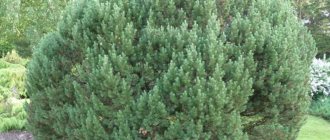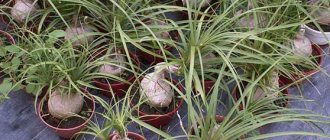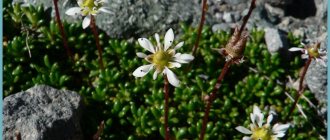Calendula is also called marigold. This herbaceous plant belongs to the Asteraceae family. In nature, marigolds can be found in Western Asia, the Mediterranean, and also in Western Europe. The name of this flower comes from the Latin word calendae, which means “first day of the month.” This genus includes about 20 plant species, among which there are both annuals and perennials. There are types (for example, medicinal marigolds) that are not only very beautiful, but also have healing properties. These properties were first mentioned by Dioscorides, who lived in the 1st century AD. e. and was an ancient Greek physician and philosopher. Marigolds were also used to create healing remedies by Galen, Avicenna, Amirdovlat Amasiatsi and the famous herbalist Nicholas Culpeper. Once upon a time, marigolds were used as a vegetable plant, so they were used to make wine, pudding, fillings for dumplings, and they were also put in oatmeal and soups. This plant was called the poor man's spice. The fact is that overseas spices were very expensive, and calendula could be an excellent replacement for saffron. It made dishes more tart and gave them an orange-yellow tint. This plant has gained immense popularity in European countries. Shakespeare himself mentioned such a plant in his work, while Queen Margarita of Valois (Queen Margot) of Navarre preferred marigolds to all other garden flowers.
Botanical description
From the photo of calendula, many people know what this plant looks like. The flowers are yellow and orange, grouped into single inflorescences - “baskets”. The calyxes reach 4 cm in diameter.
The outer part of the flowers consists of elongated petals. In the center there are small tubular flowers.
The leaves of calendula are alternate and oblong in shape. Stems are erect and branched. They can reach 70 cm. The plant blooms from June to September. Domesticated flowers are larger.
general information
Calendula is a very compact and neat representative of the Asteraceae family with characteristic basket-shaped inflorescences. It originally grew in the Mediterranean and parts of Asia, but is now found throughout the world.
Calendula has a developed taproot and a straight stem, which can be branched, depending on the species. Height varies from 15 to 70-80 cm. The shoots are slightly sticky to the touch due to special glandular fibers.
Calendula baskets are collected from flat reed petals of yellow or orange color. Flowering lasts from summer to autumn cold snaps, and throughout the entire season the plant exudes an expressive aroma.
We can talk about the medicinal properties of calendula for a very long time. It is not for nothing that it is grown in entire plantations, and its extract is actively used even in official medicine. In gardening, the beautiful flower is grown in mixborders, carpet plantings, for decorating terraces and balconies, and as a background for flower beds.
Photo: vesel-dk.pavkult.ru
Varieties of calendula
There are about 20 species and varieties. The development of new varieties is carried out simultaneously in two directions:
- medical;
- decorative
For today's laziness, the best varieties of decorative calendula are: Yuvel, Radio, Sensation. Among the medicinal species, the most valuable are: Ryzhik, Sakharov orange.
Calendula officinalis (marigold)
Height up to 70 cm. Flowers are bright yellow. They have a refreshing aroma. The stems are highly branched.
The most common type. Seeds retain the ability to germinate for up to 5 years!
Decorative types of calendula officinalis are in priority due to their larger size and length of flowering.
Calendula field
It grows only up to 30 cm. The “baskets” are pale mustard or ocher in color, only 2 cm in diameter.
Not popular, because... The flowers are quite small and inconspicuous.
Types and varieties of perennial garden calendula
In nature, there are from 12 to 20 species - representatives of the genus Calendula. To create decorative specimens, breeders use the technique of hybridization. The most common are two types - Medicinal and Field, which are pollinated by pollen of Bicolor (bicolor), Moroccan and other varieties.
Bracken fern - what it looks like and where it grows
The perennial large-flowered double calendula does not tolerate winters with temperatures below -10°C.
Important! To preserve flowers, in the fall they are transplanted into containers and transferred to a glazed balcony, greenhouse or windowsill.
Field calendula (Calendula arvensis)
It is widespread in the fields of southern Europe as a weed; it reproduces along roads and in forest clearings by natural seed dispersal.
Bushes 45-50 cm high, leaves are bright green and shiny. The flowers of the field variety are orange, simple, 1.5-2 cm in diameter.
Calendula officinalis (Calendula officinalis)
The most common type of marigold.
The flowers can be yellow, lemon-colored, or even whitish. The middle tubular flowers are darker than the reed flowers or the same color. The flowers are from 2 to 6 cm in diameter.
For medicinal purposes, flowers are collected at the moment of their full opening. The raw materials are dried under a canopy and stored in paper bags for no more than 1 year.
Other types
One of the popular varieties is Empress. It has double flowers with a diameter of up to 10 cm. The color of the petals is from dark yellow to light orange, the average height of the plants is 45 cm. The culture enlivens mixborders and is used as the main species in garden beds, containers and tubs.
The Geisha variety resembles a chrysanthemum. The orange petals have red tips. The center of the flower has purple and black spots.
A double variety with variegated petals is the Sonnenstein calendula.
Empress
Geisha
Sonnenstein
Properties of calendula
Benefit
Calendula has an incredibly rich composition:
- minerals (fluorine, zinc, magnesium, iron, iodine);
- vitamins (B1, C, E, F, K and others);
- essential oils. This means that the plant has an antimicrobial, calming effect;
- flavonoids are an excellent antispasmodic;
- carotenoids - substances that participate in the synthesis of the most important vitamin A;
- coumarins – have analgesic and anti-inflammatory properties;
- sterols – reduce cholesterol levels.
You can continue for a long time... In addition to all of the above, the calendula plant is a valuable honey plant. Also, few people know that marigolds were also used as a vegetable plant: they were added to soups and puddings.
Harm
You should not take preparations prepared from marigolds in the following cases:
- allergic reaction to the plant and its components;
- bronchial asthma;
- exacerbation of ulcers;
- low pressure;
- pregnancy;
- children under 3 years of age - if used externally, and children up to 10 years of age - if used intravenously.
After flowering
At the end of the calendula flowering period, it is necessary to break off the stems with green seeds to prevent self-seeding and prolong flowering.
After the plant has completely stopped blooming, the seeds are collected and the remaining stems are dug up, since marigolds are an annual.
Collecting seeds
Harvesting is done after they are completely ripe.
To prevent self-seeding, you need to put a small gauze bag on the already wilted inflorescence.
This seed collector is fixed on the stem of the calendula.
Calendula in winter
Marigolds are annuals and after flowering has stopped, the plants can be dug up and removed from the site.
Also, if the seeds were planted in the fall, then they can easily withstand winter frosts while in the ground, and in the season they will give good sunrises.
Garden calendula looks great surrounded by many other ornamental plants. Due to their unpretentiousness, many varieties of marigolds are used as flowers that are planted along fences and paths in country houses.
Due to the high content of essential oil, marigolds can repel some pests, which is a good addition in the case of mixed plantings.
Growing
If a flower is not only beautiful, but also useful, it will definitely find its place on the site.
Growing calendula is possible in two ways: in open ground and using seedlings.
Planting in open ground
The simplest option. Calendula is most often planted in April, but it is also possible in October. It is planted in the spring, when the earth not only warms up, but also dries out.
To determine the readiness of the soil, throw in a lump of earth - if it crumbles, you can plant. It is best to dig up the site in the fall, using humus, urea, and phosphorus additives.
Calendula seeds are sown in the soil to a depth of 2 cm. The intervals between seedlings are maintained at 25-30 cm. After 2-3 weeks, the first shoots will appear. They should be thinned out. The excess ones can be transplanted to another place - calendula tolerates “moving” very well. The marigolds will see their first flowers in 10 weeks.
Sowing seeds for seedlings
This is done if you want the plant to bloom earlier. Seeds for seedlings are sown in late March or early April. You can plant them in a separate cup, or in a common box.
Seedlings should be covered with film and maintained at a temperature of 18-20°C. With the appearance of the first shoots, the film is removed and the temperature is reduced to 15°C.
The strengthened seedlings are sent to a permanent place. Planting in the ground is carried out in May, when the plant has several true leaves.
Planting calendula in open ground
What time to plant
After the plants have 5 or 6 leaves, they should be transplanted into open soil. As a rule, this time falls in the second half of May. But it should be remembered that before planting, the seedlings will need to be hardened off, and this despite the fact that these flowers are quite winter-hardy and tolerate spring frosts well at night. To harden the plants, you need to transfer them every day for a short period of time to a covered terrace or balcony for seven days.
For planting, you need to choose a lighted area, and the soil should be moist, well-drained and saturated with nutrients. Experienced gardeners try to plant such flowers in the inter-rows of other garden and vegetable crops, which is a preventive measure against certain harmful insects (ticks, butterflies and their larvae). However, you cannot plant such a plant next to basil or radishes, as otherwise they will grow very slowly.
How to plant
Seedlings should be planted in open soil using the same scheme as when sowing such a flower in the garden. So, between the bushes you need to maintain a distance of 25 to 30 centimeters, and between the rows you need to leave a distance of 0.6 to 0.7 m. At the same time, for plants grown to create medicinal raw materials, you will need a distance of 7–10 centimeters, while the row spacing should be from 0.3 to 0.4 meters. Plants begin to bloom 40 to 50 days after sowing the seeds.
This plant can reproduce independently by self-sowing.
Care
Marigolds are not picky about conditions. The flower loves sunlight and well-drained soil.
Care consists of timely watering, periodic weeding and feeding.
You should know how to water the plant: regularly, avoiding excess moisture. On hot days, water generously.
The flower can withstand night frosts. But for this, hardening must be carried out before planting. Boxes with seedlings are taken out into the air for a week.
At the beginning of flowering, calendula can be fertilized with nitrogen - it promotes the growth of green mass. You can also spray with fertilizer containing boron for long and lush flowering.
Caring for calendula in the garden
Caring for your nails is very easy. So, they need to be watered only during periods of prolonged drought; they should also loosen the surface of the area and remove weeds from it. Calendula also requires fertilizing with complex mineral fertilizers once a month. But when growing such a flower, you should remember that after the position of the opened inflorescences becomes horizontal, you should remove from the bush all those flowers that are already open, this will allow the plant to bloom even longer and more luxuriantly. As a result of this, a lot of buds will appear, and the calendula will bloom for a long time. But at the same time, fully opened inflorescences must be picked off regularly. If you do not do this, the plants will bloom in the last days of July.
How to propagate
This plant is propagated exclusively by seeds.
Pests and diseases
It happens that these flowers become infected with powdery mildew or black spot. If brown or black spots appear on the leaf blades, this means that it is infected with black spot. In case of infection with powdery mildew, a whitish coating appears on the shoots, leaf blades and flowers, which becomes brown over time, the infected parts stop growing and change their color to black. The infected plant becomes less frost-resistant. You can get rid of such diseases by treating infected bushes with fungicidal agents (Topaz, Topsin, Skor or Fundazol). Preventive measures:
- thin out plantings in a timely manner;
- remove weeds in a timely manner;
- feed flowers correctly, especially paying attention to nitrogen-containing fertilizers;
- remove plant residues from the site;
- carry out deep digging of the site in the autumn;
- remember the rules of crop rotation;
- identify diseased bushes in a timely manner and remove them from the site.
Only aphids can settle on this flower, while other pests avoid it. This plant has one peculiarity - it is able to attract all the aphids present in the garden, which greatly facilitates the fight against such a pest. To destroy it, you should use such means as: Karbafos, Fufanon, Actellik, Antitlin, Akarin or Biotlin.
Pests and diseases
Most often, marigolds are affected by black spotting. To prevent this problem, you should avoid excessive fertilization and also maintain distance between seedlings.
Occasionally, calendula is affected by powdery mildew and aphids.
How to dry calendula correctly
Flowers must be collected in dry weather. The flowers are laid out in a thin layer on paper in a room with good ventilation. It is not recommended to use an electric dryer, because... Some of the beneficial properties will be lost.
To understand whether the calendula has dried or not, you should press your finger on the inflorescence. If the flower has dried well, the “basket” will disintegrate into petals.
Dry flowers are stored in cardboard boxes and glass containers. It is recommended to update the “harvest” annually.
3. Medicinal properties and contraindications
3.1.Composition of plants
Calendula contains:
- glycosides, flavonoids,
- plant mucilage,
- some fatty acids (calendal, salicylic and linoleic),
- essential oil,
- lutein,
- beta - carotene.
↑ Up,
The inflorescences contain:
- triterpenoids,
- sterols,
- coumarins,
- vitamins E and C,
- lycopene,
- vegetable paraffins,
- saponin,
- phytoncidal compounds,
- alkaloids,
- tannins.
↑ Up,
Of the chemical elements found in flowers:
- zinc,
- selenium,
- molybdenum,
- iron,
- potassium,
- magnesium,
- copper.
↑ Up,
3.2.Use in folk and official medicine
In folk and official medicine, calendula has become widespread due to its anti-inflammatory, antipyretic and analgesic properties. Also used as an antiviral and antimicrobial agent.
Externally, plant juice can be used as a wound-healing, hemostatic and anti-edema agent. Calendula essential oil is used as an insect repellent.
Baths with calendula infusion are indicated even for the youngest children as a remedy for diaper rash. Rinsing your mouth with calendula tincture can reduce plaque, gum disease and bleeding - it is antimicrobial and antibacterial.
↑ Up,
Calendula products reduce ear pain in children and adolescents with ear infections. For various skin diseases - for example, dermatitis, eczema, ulcers, bedsores, burns, this medicinal plant can significantly improve the condition.
The flower is also widely used to regulate the menstrual cycle in women. Plants are effective in the treatment of chronic conjunctivitis.
For bruises, calendula lotions can help improve blood flow to the affected area and relieve swelling more quickly. It is also believed that calendula flowers can improve the body's immunity.
↑ Up,
Indigenous peoples of North America have long used flowers for indigestion, and the plants also have a pronounced choleretic and diuretic effect. Taking it orally is believed to help slow the growth of cancerous tumors.
For diseases of the upper respiratory tract, plants are used as an expectorant; they are also able to cleanse blood vessels and stabilize blood sugar levels in diabetes.
Calendula is used in the form of herbal tea and aqueous oil infusions.
↑ Up,
3.3.Contraindications
Contraindications to the use of calendula as a medicinal herb may be mainly allergic reactions and individual intolerance.
For women in early pregnancy, calendula is also contraindicated, as it can cause miscarriage. Ingestion in the first trimester of pregnancy can intensify attacks of toxicosis and cause a gag reflex. The inflorescence contains plant hormones similar to female human hormones.
You should not combine the use of this medicinal plant with medications for high blood pressure, diabetes, or sedatives.
It is forbidden to use calendula internally for tuberculosis and peptic ulcers. One of the contraindications is low blood pressure - taking marigold infusion can reduce it even more.
↑ Up,
3.4.Use in cosmetics
In cosmetics and cosmetology, calendula extract is used in many body care products and is often added to baby creams.
It is believed that plants are able to moisturize and nourish the skin, as well as increase its elasticity and firmness. The flower helps whiten the skin and get rid of freckles and age spots, regulates skin oiliness, tightens pores and helps get rid of acne and blackheads.
The vitamin E content in the inflorescences accelerates skin regeneration when using cosmetics with calendula.
Essential oils are added to various perfume compositions, and the pigment contained in the inflorescences is used as a dye.
Marigolds are often used in shampoos - they help fight hair loss and brittleness, accelerate hair growth and give a shiny and well-groomed appearance, and also help get rid of dandruff.
↑ Up,
3.5.Procurement and storage of medicinal raw materials
In order to obtain and preserve the maximum of useful substances, the collection and storage of plants should be properly organized. For medical purposes, only inflorescences are used and cut off immediately after they have opened - during this period of time the maximum concentration of useful substances is achieved.
You shouldn’t just pluck out the petals - they retain less nutrients; cut off the inflorescences along with the green base - the receptacle and a piece of shoot about 2 cm long.
You should not collect grass after rain or watering, or during the daytime - it is better to postpone cutting until the morning and carry it out immediately after the dew drops have dried.
↑ Up,
Cutting is carried out with a sterile and sharpened pruner, separating only the inflorescences. The raw materials are collected and laid out on racks in a thin layer in a warm and well-ventilated place.
The flower heads are turned over daily to ensure even drying. Harvested inflorescences should not be exposed to direct sunlight. The entire drying process usually takes 7 - 10 days.
A special electric dryer can speed up the drying process - the inflorescences are kept in it for 4 hours at a temperature of about 40 degrees Celsius.
After complete drying, the inflorescences are collected in fabric bags or paper envelopes and stored in a cool and dry place. If these simple rules are followed, plants retain their beneficial properties for 1 - 2 years.
↑ Up,
The use of calendula for various diseases
Domestic pharmacists value the plant very much. The flower is used in:
- cardiology;
- cosmetology;
- gynecology;
- gastroenterology;
- dermatology.
In medicine, the plant stands alongside such “helpers” as St. John’s wort, chamomile, and sage.
Remedies from the flower can be taken both internally and externally.
Flowers are most often used. Thus, they contain natural lutein, which helps improve vision. But it’s no secret that in the modern world people spend a huge amount of time at the computer.
Use in cosmetology
Calendula has also been used in cosmetology: against inflammation of the skin, for regeneration, anti-aging effects, as an antiseptic, for healing wounds. The plant is used for all kinds of infusions and added to creams and lotions. When boiling calendula, they use it as lotions and baths.
Ointments and decoctions for pimples and suppurations are popular. When used, inflammation decreases, and the skin becomes clearer and healthier. Calendula tincture also helps with enlarged pores and oily face.
Calendula oil is included in creams whose action is aimed at rejuvenation, regeneration, saturation with microelements, restoration and nutrition of the skin. You can add the oil to your daily cream yourself: a drop per serving.
After the first use of calendula tincture when washing your hair, the condition of your hair and scalp will improve. The tincture is also used for dandruff, split ends and brittle ends. For quickly soiled and oily hair, marigolds are also used.
Used for hair loss and if you want to grow it back, since thanks to calendula, hair grows faster. Rinse your hair with calendula infusion after washing: strong and shiny curls are guaranteed.
To improve the health of the cells, wipe the skin daily with a cotton pad soaked in calendula tincture.
The effect of a cream or mask will be much stronger if you add a more concentrated infusion to it. Calendula is added to anti-ultraviolet cream and to cream to protect against wind and frost.
You can also prepare tinctures yourself: pour water over the flowers and steam for 15–18 minutes.
Calendula tincture
Marigold tincture is a common home remedy.
You will need 1 tablespoon of flowers (preferably fresh). They are filled with vodka (half a liter). Leave for 10 days in a cool, dark place. After cooking, strain. The tincture retains its beneficial properties for six months.
The decoction is used for quick healing of cuts, gargling for sore throats, and to “disperse” bile.
As a rule, the average dose for an adult is 20-30 drops three times a day. The course lasts no more than two weeks.
As you can see, planting and caring for calendula in open ground does not require much effort. And with the help of this incredible multifunctional flower, you can not only decorate your flowerbed in an interesting way, but also improve the health of your entire body.
Calendula flower - where it grows, when it blooms, description of the plant
Calendula grows on all continents in regions with a temperate, humid climate. It is an ornamental plant - it can be grown in garden beds, in mixborders or as an indoor flower on window sills and balconies. An unusual aroma emanates from the buds and stems of marigolds, which helps to calm down and relax.
The buds look very picturesque
Additional Information! The name of the plant is translated from Latin as “first day of the month.”











